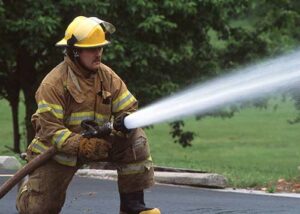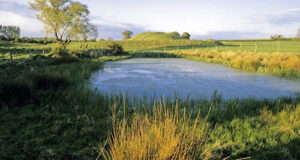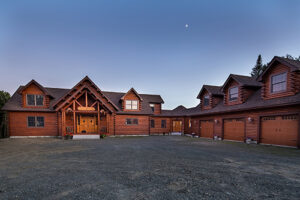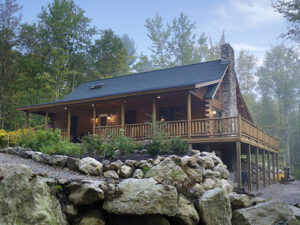 For many folks hoping to transition to a more rural lifestyle in their Katahdin Cedar Log Home, preparing for a potential fire is a little more challenging in the country. Many small towns rely on volunteer fire departments which can take time to muster and deploy. There are steps that you can take to reduce the vulnerability of any rural home, many of which are easy to incorporate into your landscaping and building design.
For many folks hoping to transition to a more rural lifestyle in their Katahdin Cedar Log Home, preparing for a potential fire is a little more challenging in the country. Many small towns rely on volunteer fire departments which can take time to muster and deploy. There are steps that you can take to reduce the vulnerability of any rural home, many of which are easy to incorporate into your landscaping and building design.
How Frequent are Fires Near my Property?
With climate change and increasing drought conditions, the frequency of fires may be increasing in the area where you plan to build. If you’re not from the area, check local newspaper archives for word on local fires, how they were caused, and how well the fire department was able to respond. Check your town website for more information on fire-fighting services and make a call to the fire chief to understand what conditions are in your fire district. He or she will likely have tips and insights on local conditions that will inform the measures to take to protect your home.
 Farm Ponds or Holding Ponds
Farm Ponds or Holding Ponds
Traditionally, farmers who were in remote areas built and maintained a water source for pumping trucks to access. If your local fire department relies on local water sources, check with your town and state department of environmental protection to determine if building or enlarging a natural pond for fire protection is allowed and what the regulations are. You’ll also want to get an estimate of how close the pond should be located to the main structure for maximum effectiveness.
Prepare an Immediate Noncombustible Zone
Embers and sparks are the means that fires spread from the forest to homes. According to the
National Fire Protection Association (NFPA), maintaining a 5-foot perimeter of noncombustible material around your home is a good  way to protect from embers and sparks. Mulch, in particular, can smolder and burn creating a hazard that can cause flames to develop on the lower areas of the house. Hard surfaces, including brick, concrete, rock, gravel and stone are all excellent noncombustible materials to use closest to the home.
way to protect from embers and sparks. Mulch, in particular, can smolder and burn creating a hazard that can cause flames to develop on the lower areas of the house. Hard surfaces, including brick, concrete, rock, gravel and stone are all excellent noncombustible materials to use closest to the home.
Reduce Flammable Materials
Plantings of non-woody vegetation around the home should be well irrigated with dead plant materials cleared away. Gutters can also harbor combustible plant material, so keep your gutters free of debris, and make sure gutters are made of metal. A well-watered lawn is also an acceptable deterrence to sparks and flying embers.
 Making Your Deck Fire Resistant
Making Your Deck Fire Resistant
If you’re building in an area where wildfires are common, paying attention to your deck is sound fire prevention practice. Noncombustible deck boards are made of metal and fiber cement. It’s the gaps between deck boards and where decks connect to the home where embers can collect and ignite. For the most up to date noncombustible deck products check the approved list in California Code. The area under the decks should also be free of combustible materials. Ground cover underneath decks can be stones, pavers, gravel or concrete.
Taking some of the preventative measures may make the difference should a wildfire occur in your area. For more tips and information visit the NFPA Fire Preparedness website.
